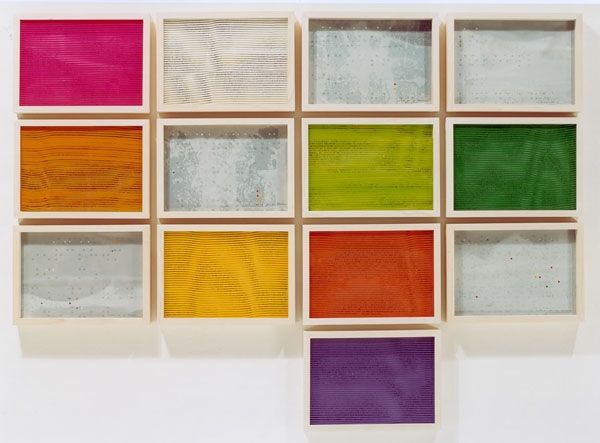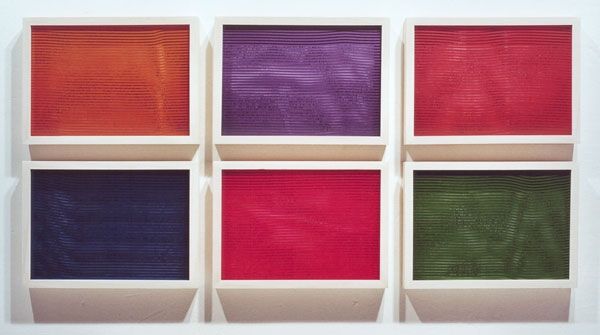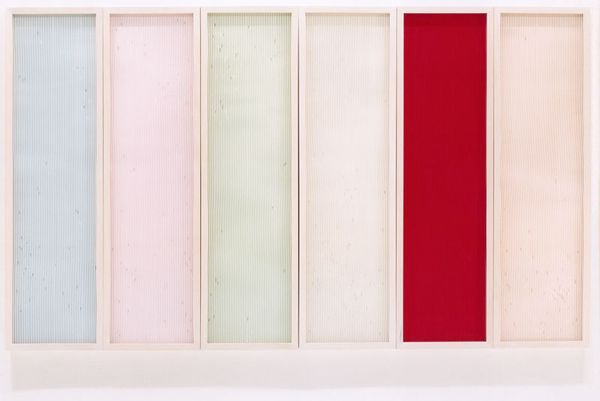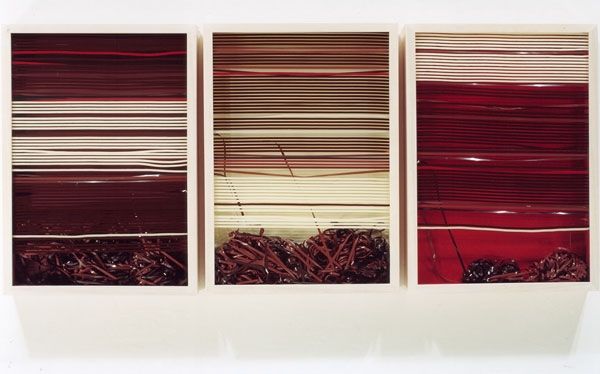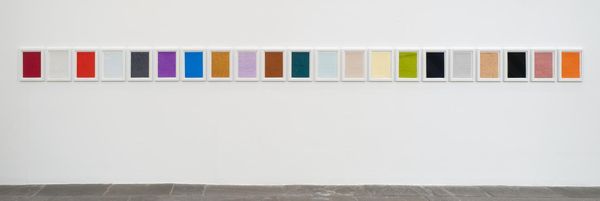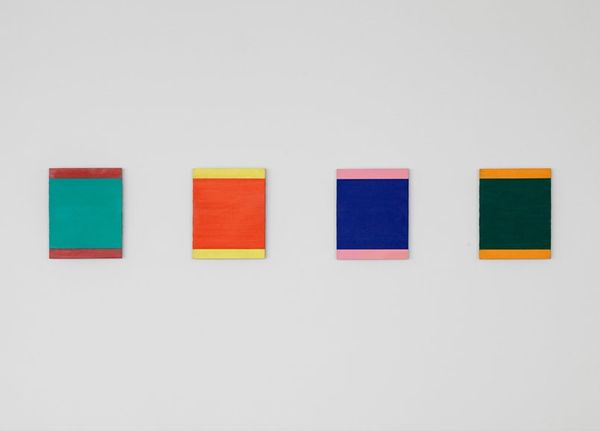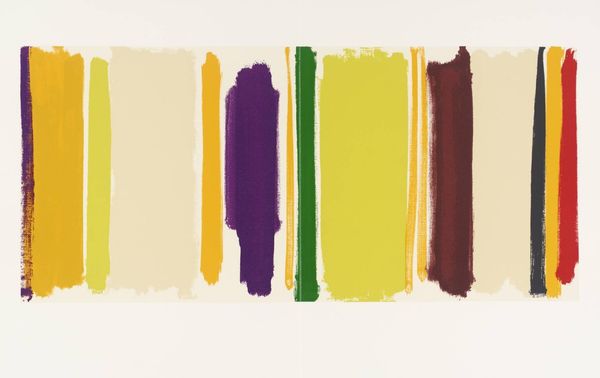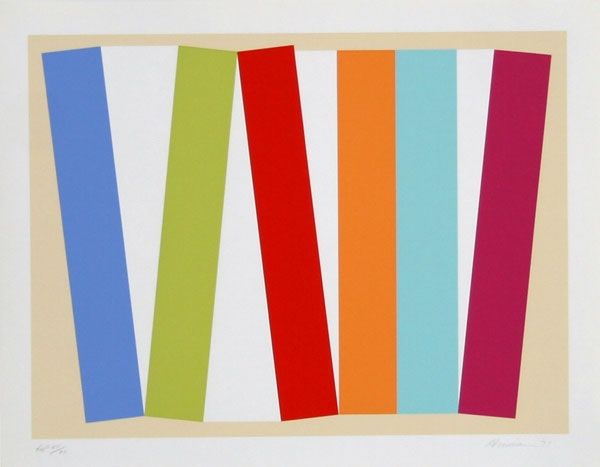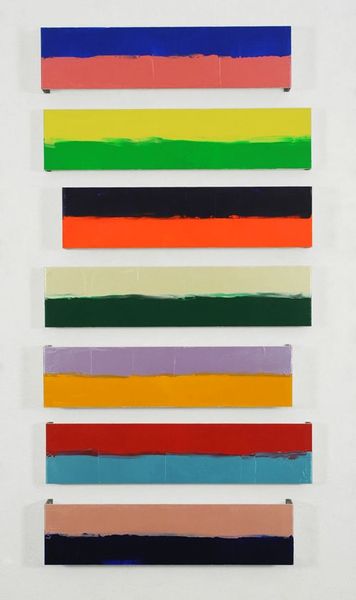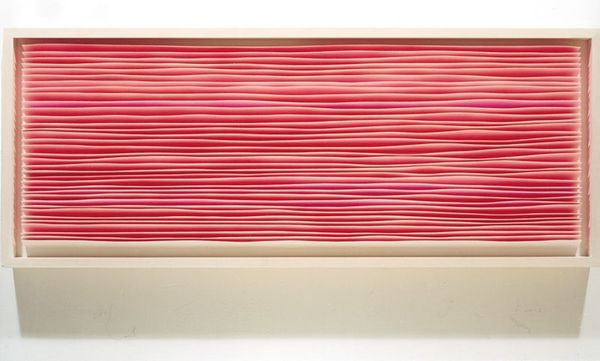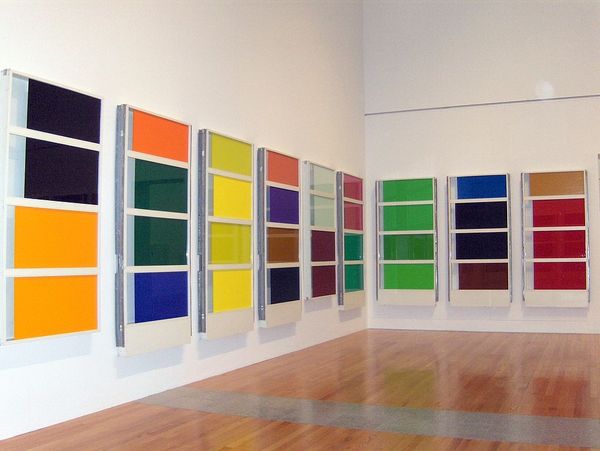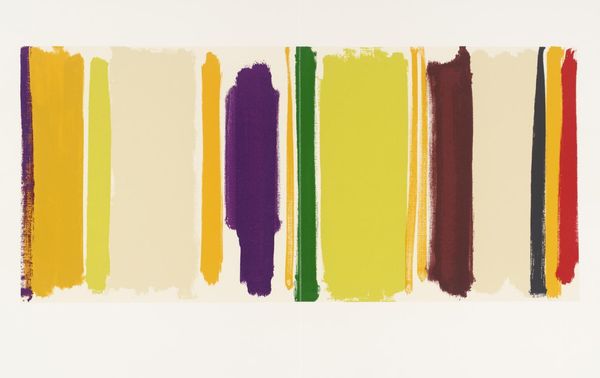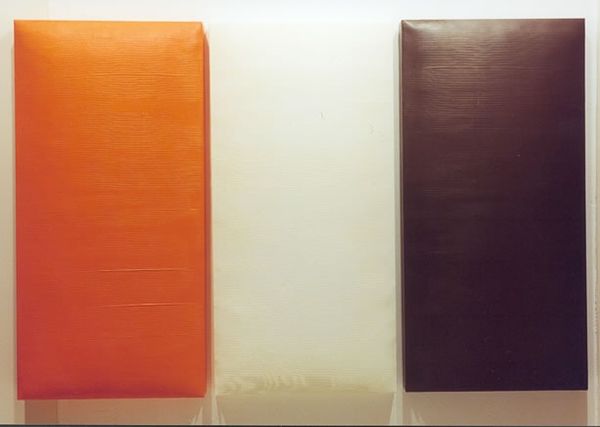
Copyright: Moon Pil Shim,Fair Use
Editor: This is an "Untitled" mixed-media piece from 1999 by Moon Pil Shim. It’s a set of six panels, each a different color with horizontal lines creating a sort of visual texture. What really strikes me is how the simple geometry feels quite playful, almost like minimalist building blocks. What’s your take on this work? Curator: It's interesting that you see it as playful. I find this work speaks more to the way art institutions validate and categorize abstract work. How does an artist gain entry, for instance, into the white cube? The format—modular panels, primary and secondary colours—positions itself within a late-20th-century dialogue with modernism. Are these playful colors inviting or, conversely, institutional and distancing? Editor: That’s a fascinating perspective! I hadn’t thought about the institutional context influencing the reception. It raises the question: Does the serial presentation risk flattening the work? Curator: Precisely. Consider also the context of the '90s: after postmodernism, many artists grappled with redefining painting. Was it “dead” as some critics claimed, or could it be revived? These kinds of decisions and how the paintings are displayed play into that story. Editor: I suppose the title – or lack thereof – allows the viewer to project their own interpretation within that established artistic framework. Curator: Yes, that anonymity itself becomes a statement, a positioning within the history of abstract art. But, importantly, who gets to make such "statements", and how does the art world perpetuate those roles? Editor: This definitely makes me think about the power structures that exist, even in seemingly simple abstract works. Thank you! Curator: My pleasure. Hopefully, this piece prompts all to examine what forces inform their perspectives.
Comments
No comments
Be the first to comment and join the conversation on the ultimate creative platform.
